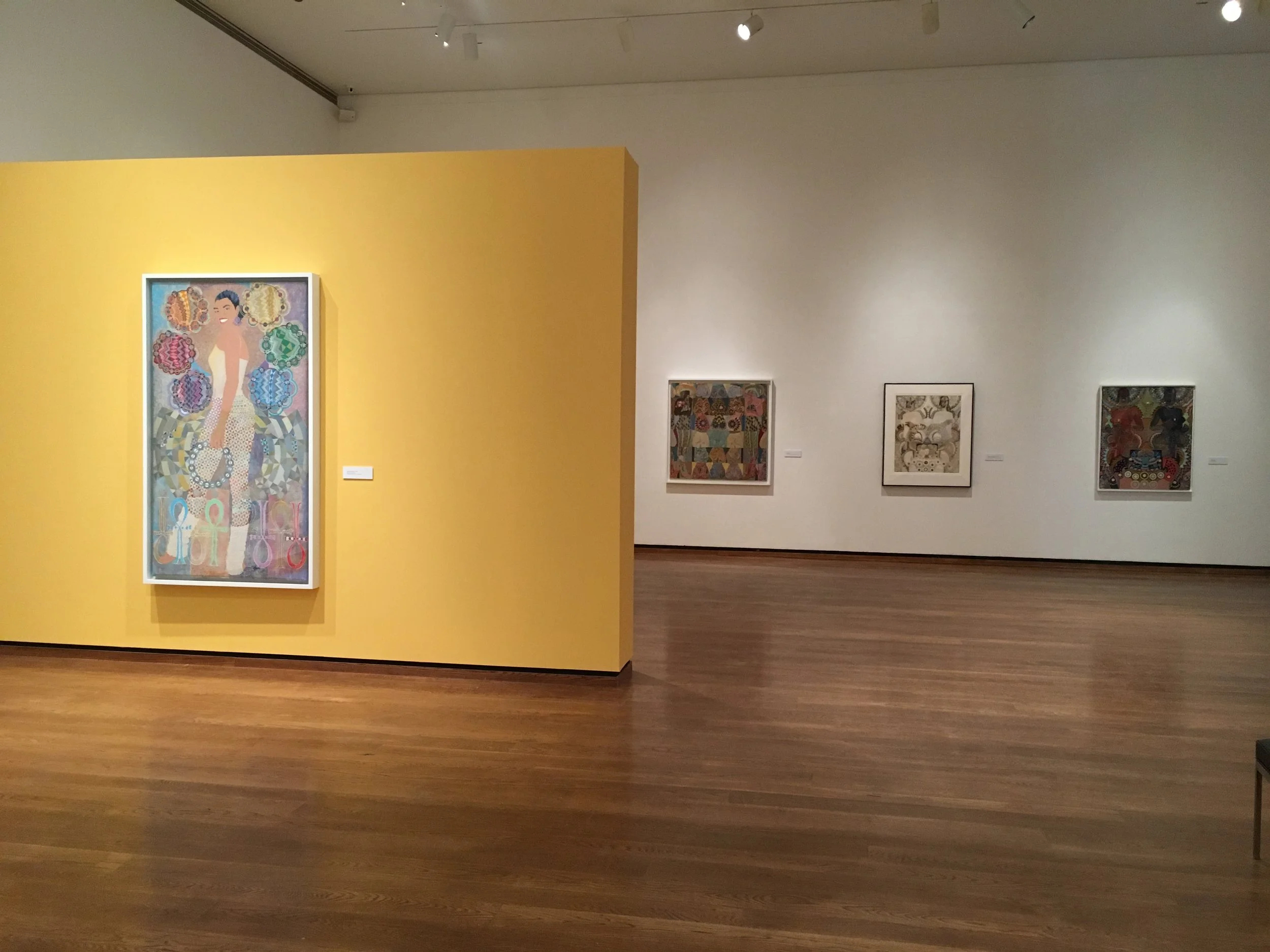


















Jeff Donaldson: Dig
Everson Museum of Art: January 20 – April 29, 2018
Akron Art Museum: October 26, 2018 – January 21, 2019
Dig is the first museum retrospective devoted to the distinctive work of Jeff Donaldson (1932-2004), an important figure in the history of African American art and an under-recognized contributor to the development of identity-centric art in the late twentieth century. Beginning with Donaldson’s activist roots in Chicago and his establishment of the AfriCOBRA style, Dig traces Donaldson’s evolving aesthetic style, from agitprop tactics to sophisticated studies in iconography and patterning, and features many works never before seen in public.
Donaldson is perhaps best known as one of the co-founders of the African Commune of Bad Relevant Artists (AfriCOBRA). Formed in Chicago’s South Side in 1968, AfriCOBRA was established during a time of political and social unrest and in an arts world that privileged white artists and audiences. In response, AfriCOBRA sought to create a new kind of art that was politically engaged, reflected contemporary Black culture, appealed specifically to a Black audience, and defined a transnational aesthetic. Presented alongside important AfriCOBRA memorabilia are iconic examples of Donaldson’s early work, known for its high-energy “Kool-Aid” palette. These paintings and drawings weave together text and lettering to create rhythm and visual intensity, with psychedelic associations that tapped into the counter cultural zeitgeist of the 1960s and 1970s.
Purposefully “bad,” as the AfriCOBRA manifesto intended, Donaldson eschewed the aesthetics of the Western canon and created a distinctly bold figurative style that celebrated the history of African art and Black culture. Energetic colors, intricate patterns, and African iconography combined to form images that carried messages of Black empowerment and unity, fulfilling Donaldson’s lifelong commitment to creating socially relevant and visually striking works.
Following his move to Washington, DC in 1970 to teach at Howard University, Donaldson largely devoted himself to teaching, mentoring, and advancing an authentic Black art. He continued to paint and explore new ideas, but rejecting the hierarchies of the art world, opted to display his work internationally and at community centers and other more populist venues. As he said, he made “art for the people, not for critics.” By distancing himself from the New York commercial gallery scene and, by extension, a network of predominantly white critics and taste makers, it is not surprising that Donaldson is only now starting to receive the attention he deserves.
Covering four decades of Donaldson’s work, Dig brings to light an original voice and visionary figure in the history of twentieth century art. His work, born in the era of Civil rights, remains more relevant than ever as we continue to struggle with issues of discrimination and racism while striving to build communities based upon representation and equality.
—DJ Hellerman, Curator of Art & Programs